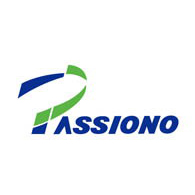
 Ten years of qualification
Ten years of qualification
 Audited Supplier
Audited Supplier
In This Store
Category:Natural Extracts > Plant Extracts
Product Name:1.5%,2%,2.5%, 5% Astaxanthin
CAS No.:472-61-7
Standard:USP
Price(USD):0.00
International
Approvals/Standards:ISO Certificate
Company:SHANGHAI PASSIONO INT'L CO., LTD.
Grade: food grade, pharmaceutical grade
Factory Location: Shandong
Main Sales Markets: North America,Western Europe,Eastern Europe,Australasia,Middle East,Africa
Packaging Information: 25.0kg/drum
Sample Provided: yes
Payment Terms: T/T in advance
Latin name: Haematococcus pluvialis
Active Ingredient: Astaxanthin
Specification: 1%, 1.5%, 2.5%, 3.5%, 5%, 10%
Appearence: Dark red powder / Oil
Part of used: Shell-Broken algae
Molecular Formula: C40H52O4
Molecular Weight: 596.84
What is Haematococcus pluvialis Extract?
Haematococcus pluvialis is a freshwater species of Chlorophyta from the family Haematococcaceae. This species is well known for its high content of the strong antioxidant astaxanthin, which is important in aquaculture, various pharmaceuticals, and cosmetics. The high amount of astaxanthin is present in the resting cells, which are produced and rapidly accumulated when the environmental conditions become unfavorable for normal cell growth. Examples of such conditions include bright light, high salinity, and low availability of nutrients.Haematococcus pluvialis is usually found in temperate regions around the world. Their resting cysts are often responsible for the blood-red colour seen in the bottom of dried out rock pools and bird baths. This colour is caused by astaxanthin which is believed to protect the resting cysts from the detrimental effect of UV-radiation, when exposed to direct sunlight.
What is Astaxanthin?
Astaxanthin is found in microalgae, yeast, salmon, trout, krill, shrimp, crayfish, crustaceans, and the feathers of some birds. It provides the red color of salmon meat and the red color of cooked shellfish. Professor Basil Weedon's group was the first to prove the structure of astaxanthin by synthesis, in 1975.
Astaxanthin, unlike several carotenes and one other known carotenoid, is not converted to vitamin A in the human body. Like other carotenoids, astaxanthin has self-limited absorption orally and such low toxicity by mouth that no toxic syndrome is known. It is an antioxidant with a slightly lower antioxidant activity in some model systems than other carotenoids. However, in living organisms the free-radical terminating effectiveness of each carotenoid is heavily modified by its lipid solubility, and thus varies with the type of system being protected.
While astaxanthin is a natural nutritional component, it can also be used as a food supplement. The supplement is intended for human, animal, and aquaculture consumption. The commercial production of astaxanthin comes from both natural and synthetic sources.
Where will Astaxanthin be used for?
1. Treating Alzheimer's disease, Parkinson's disease, and “brain attack” (stroke),
2. High cholesterol, and an eye condition called age-related macular degeneration (AMD).
3. Preventing cancer.
4. The most powerful Natural anti-oxidant.
5. Applied directly to the skin for protection against sunburn.

Contact Us
Tel: (+86) 400 610 1188
WhatsApp/Telegram/Wechat: +86 13621645194
Follow Us:




 Pharma Sources Insight January 2025
Pharma Sources Insight January 2025


